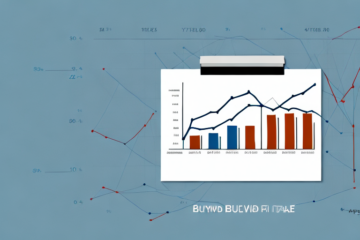Understanding 10-K: A Guide to Key Finance Terms
Whether you’re an investor, financial analyst, or student of business, you’re likely familiar with the importance of a company’s 10-K report. The 10-K is a comprehensive filing that publicly traded companies must submit to the Securities and Exchange Commission (SEC) annually. It provides detailed information about the company’s financial performance, operations, and management.
What is a 10-K Report?
A 10-K report is a comprehensive document that publicly traded companies in the United States must file with the SEC annually. Also known as a Form 10-K, the document provides detailed information about the company’s operations and financial performance over the previous fiscal year.
The 10-K report is a crucial tool for investors and analysts to evaluate a company’s financial health and make informed investment decisions. It includes information such as the company’s revenue, expenses, assets, liabilities, and risks. The report also provides insights into the company’s management, governance, and future plans.
Preparing a 10-K report is a time-consuming and complex process that requires the involvement of various departments within the company, such as finance, legal, and compliance. The report must comply with SEC regulations and accounting standards, and any errors or omissions can result in legal and financial consequences for the company.
The Purpose of a 10-K Report
The purpose of a 10-K report is to provide investors, analysts, and other stakeholders with comprehensive information about a publicly traded company’s financial performance, operations, and management. The 10-K report is designed to provide transparency and accuracy in financial reporting and to give investors the information they need to make informed investment decisions.
Additionally, the 10-K report is required by the Securities and Exchange Commission (SEC) for all publicly traded companies. It must be filed annually and includes information such as the company’s history, risk factors, legal proceedings, and executive compensation. The report also includes audited financial statements, which provide an independent assessment of the company’s financial health. Overall, the 10-K report is a crucial tool for investors to evaluate a company’s financial performance and make informed decisions about buying or selling its stock.
Key Components of a 10-K Report
A 10-K report typically includes the following sections:
- Business description
- Risk factors
- Financial statements
- Management discussion and analysis (MD&A)
- Corporate governance
- Executive compensation
- Legal proceedings
In addition to these sections, a 10-K report may also include information about the company’s market share, competition, and industry trends. This information can provide valuable insights into the company’s position within its industry and its potential for growth. Additionally, some 10-K reports may include a section on environmental, social, and governance (ESG) factors, which can provide investors with information about the company’s sustainability practices and social responsibility initiatives.
How to Access a Company’s 10-K Report
A company’s 10-K report can be accessed through the SEC’s EDGAR system. The easiest way to access a company’s 10-K report is to go to the SEC’s website, enter the company’s name or ticker symbol into the search bar, and select “Filings” from the menu on the left-hand side of the page. From there, you can select the company’s most recent 10-K filing.
It is important to note that the 10-K report provides a comprehensive overview of a company’s financial performance, including its income statements, balance sheets, and cash flow statements. Additionally, the report includes information on a company’s business operations, risks, and management team. Investors and analysts often use the 10-K report to evaluate a company’s financial health and make informed investment decisions.
Understanding Financial Statements in a 10-K Report
Financial statements are a critical component of a 10-K report. The financial statements included in a 10-K report typically include a balance sheet, income statement, and cash flow statement. The balance sheet shows the company’s assets, liabilities, and equity at a specific point in time. The income statement shows the company’s revenue and expenses over a given period of time, while the cash flow statement shows the company’s cash inflows and outflows.
It is important to note that financial statements in a 10-K report are prepared according to Generally Accepted Accounting Principles (GAAP). This means that the financial statements are standardized and comparable across different companies. Investors and analysts use financial statements to evaluate a company’s financial health and performance, and to make informed investment decisions.
Additionally, financial statements in a 10-K report may include footnotes and management’s discussion and analysis (MD&A) section. Footnotes provide additional information and clarification on the financial statements, while the MD&A section provides management’s perspective on the company’s financial performance and future prospects. These sections can provide valuable insights for investors and analysts.
Analyzing Management Discussion and Analysis (MD&A)
MD&A is a section of the 10-K report where management discusses the company’s financial performance and provides context for the financial statements included in the report. The MD&A section is a critical component of the 10-K report, as it provides insights into the company’s strategy, risks, and strengths. Investors and analysts should pay close attention to the MD&A section and analyze the information provided carefully.
One important aspect to consider when analyzing the MD&A section is the company’s outlook for the future. Management may provide guidance on future performance, which can be useful in determining the company’s potential for growth or decline. It is important to compare this guidance with the company’s historical performance and industry trends to assess its accuracy and reliability.
Another factor to consider is the company’s disclosure of any potential risks or uncertainties. Management may discuss factors that could impact the company’s financial performance, such as changes in regulations or market conditions. It is important to evaluate the severity and likelihood of these risks and how they may affect the company’s future prospects.
Examining Risk Factors in a 10-K Report
The risk factors section of a 10-K report outlines the various risks that a company faces. These risks can include anything from economic downturns to regulatory changes to competition and more. Examining the risk factors is important for investors and analysts to understand the potential challenges a company may face in the future.
It is important to note that the risk factors section is not meant to be a comprehensive list of all potential risks a company may face. Rather, it is a disclosure of the risks that the company is currently aware of and considers to be significant. As such, investors and analysts should also consider other potential risks that may not be listed in the 10-K report.
Understanding the Footnotes in a 10-K Report
Footnotes provide additional information about the financial statements included in a 10-K report. The footnotes can include information about accounting policies, contingencies, and other relevant information. Investors and analysts should carefully review the footnotes to gain a deeper understanding of the financial statements included in the report.
One important aspect to note is that footnotes can also provide information about the company’s risks and uncertainties. This can include information about potential legal disputes, regulatory changes, or market fluctuations that could impact the company’s financial performance. Understanding these risks can help investors make more informed decisions about whether to invest in the company.
Additionally, footnotes can provide information about the company’s use of estimates and assumptions in preparing its financial statements. This can include information about how the company values its assets and liabilities, as well as how it accounts for revenue and expenses. Understanding these estimates and assumptions can help investors assess the reliability of the financial statements and make more accurate projections about the company’s future performance.
Comparing Year-to-Year Data in a 10-K Report
Comparing year-to-year data is an effective way to understand a company’s financial performance over time. By comparing the financial statements included in a company’s most recent 10-K report with those of previous years, investors and analysts can identify trends and patterns that can provide insights into the company’s financial health.
It is important to note that when comparing year-to-year data, investors and analysts should also consider any significant changes or events that may have impacted the company’s financial performance. For example, a company may have undergone a merger or acquisition, or may have launched a new product line that could have affected its revenue and expenses. By taking these factors into account, investors and analysts can gain a more comprehensive understanding of the company’s financial performance and make more informed investment decisions.
Key Financial Ratios to Look for in a 10-K Report
Financial ratios are a useful tool for investors and analysts to analyze a company’s financial performance. There are many financial ratios that investors can use to evaluate a company’s financial health, including liquidity ratios, solvency ratios, and profitability ratios. Investors should pay close attention to key financial ratios when reviewing a company’s 10-K report.
One important financial ratio to look for in a 10-K report is the debt-to-equity ratio. This ratio measures a company’s leverage by comparing its total liabilities to its shareholder equity. A high debt-to-equity ratio may indicate that a company is relying heavily on debt to finance its operations, which can be risky for investors. Another important ratio to consider is the return on equity (ROE), which measures a company’s profitability by comparing its net income to its shareholder equity. A high ROE indicates that a company is generating strong profits relative to the amount of shareholder equity invested.
Tips for Interpreting a Company’s Financial Health from the 10-K Report
Interpreting a company’s financial health from a 10-K report requires a deep understanding of the financial statements, as well as the company’s industry, competitors, and overall strategic position. Investors and analysts should pay close attention to the MD&A, risk factors, and financial statements, and use their knowledge and experience to interpret the information provided.
One important aspect to consider when interpreting a company’s financial health is its cash flow. A company may have positive net income, but if its cash flow is negative, it may struggle to pay its bills and invest in future growth. Additionally, investors should look at the company’s debt levels and how it is managing its debt. High levels of debt can be a red flag, but if the company is using debt to invest in profitable projects, it may be a positive sign.
Another factor to consider is the company’s management team. A strong and experienced management team can make a big difference in a company’s financial health and long-term success. Investors should look at the backgrounds and track records of the company’s executives, as well as any recent changes in leadership. A company with a history of frequent turnover in top positions may be a cause for concern.
How to Use the Information from a 10-K Report to Make Investment Decisions
The information provided in a 10-K report can be incredibly valuable for investors looking to make informed investment decisions. By carefully analyzing the information provided in a 10-K report, investors can gain valuable insights into a company’s financial health, operational strengths and weaknesses, and overall strategic position.
One important aspect to consider when analyzing a 10-K report is the management discussion and analysis (MD&A) section. This section provides a narrative explanation of the company’s financial performance, as well as any significant trends or events that may have affected the company’s operations. By reading the MD&A section, investors can gain a better understanding of the company’s future prospects and potential risks.
Limitations of the Information Provided in a 10-K Report
While the 10-K report provides a wealth of information about a company’s financial performance and operations, it’s important to keep in mind the limitations of the information provided. The 10-K report is just one piece of the puzzle when it comes to evaluating a company’s financial health, and investors should use a variety of tools and techniques to gain a comprehensive understanding of a company’s overall strategic position.
Understanding the information presented in a 10-K report is critical for anyone looking to make informed investment decisions. By carefully analyzing the financial statements, MD&A, risk factors, and other components of a 10-K report, investors can gain valuable insights into a company’s financial health and overall strategic position.
However, it’s important to note that the information provided in a 10-K report is historical in nature and may not reflect a company’s current financial situation. Additionally, the report may not include all relevant information about a company’s operations, such as pending legal disputes or potential regulatory changes that could impact the company’s future performance.
Furthermore, the 10-K report is only required to be filed once a year, which means that the information may not be up-to-date or reflective of recent developments within the company. As such, investors should also consider other sources of information, such as quarterly reports, news articles, and analyst reports, to gain a more complete understanding of a company’s financial health and strategic position.










